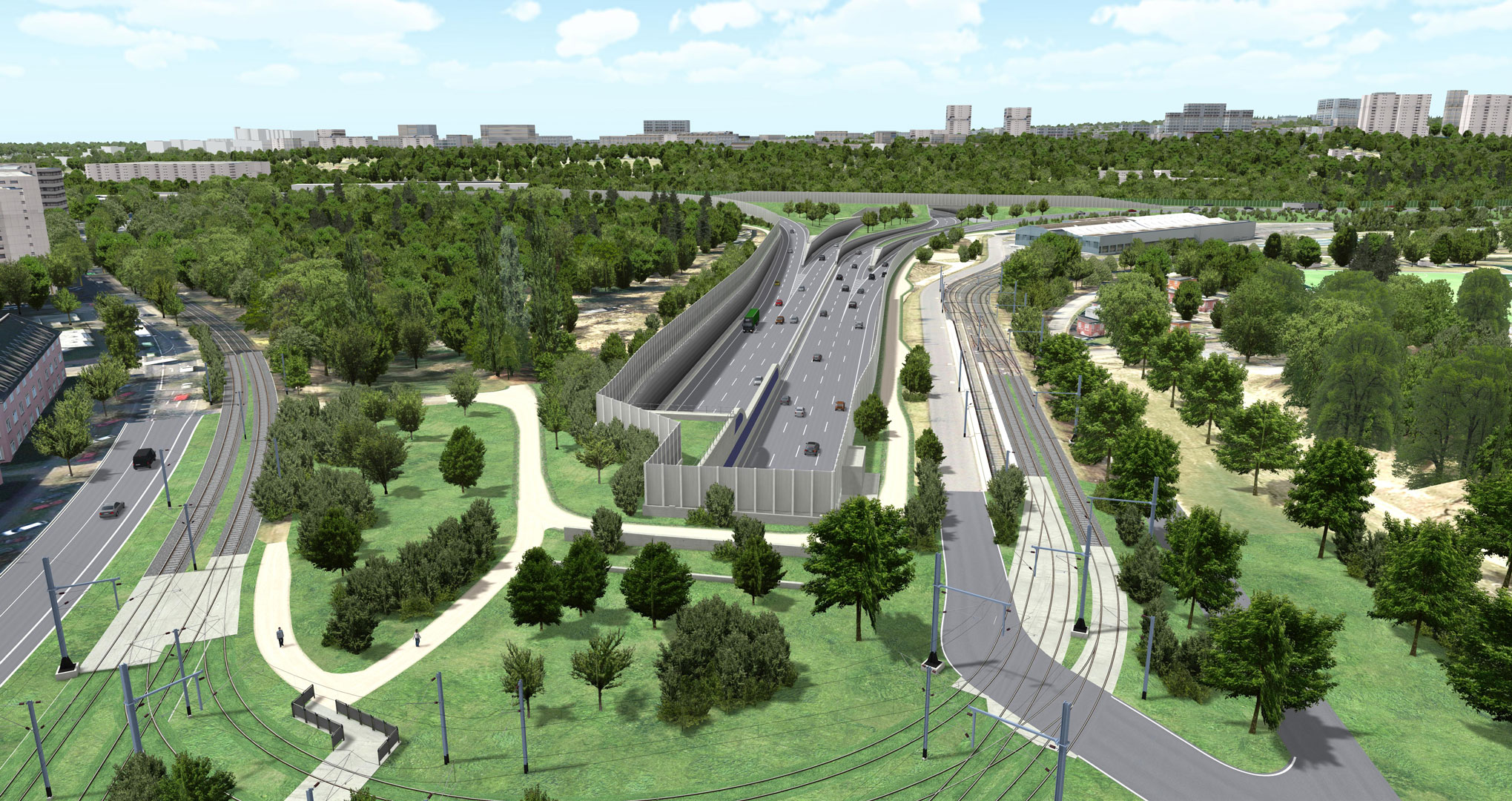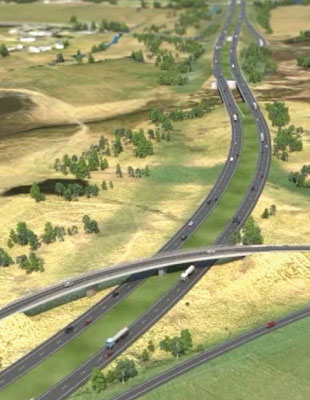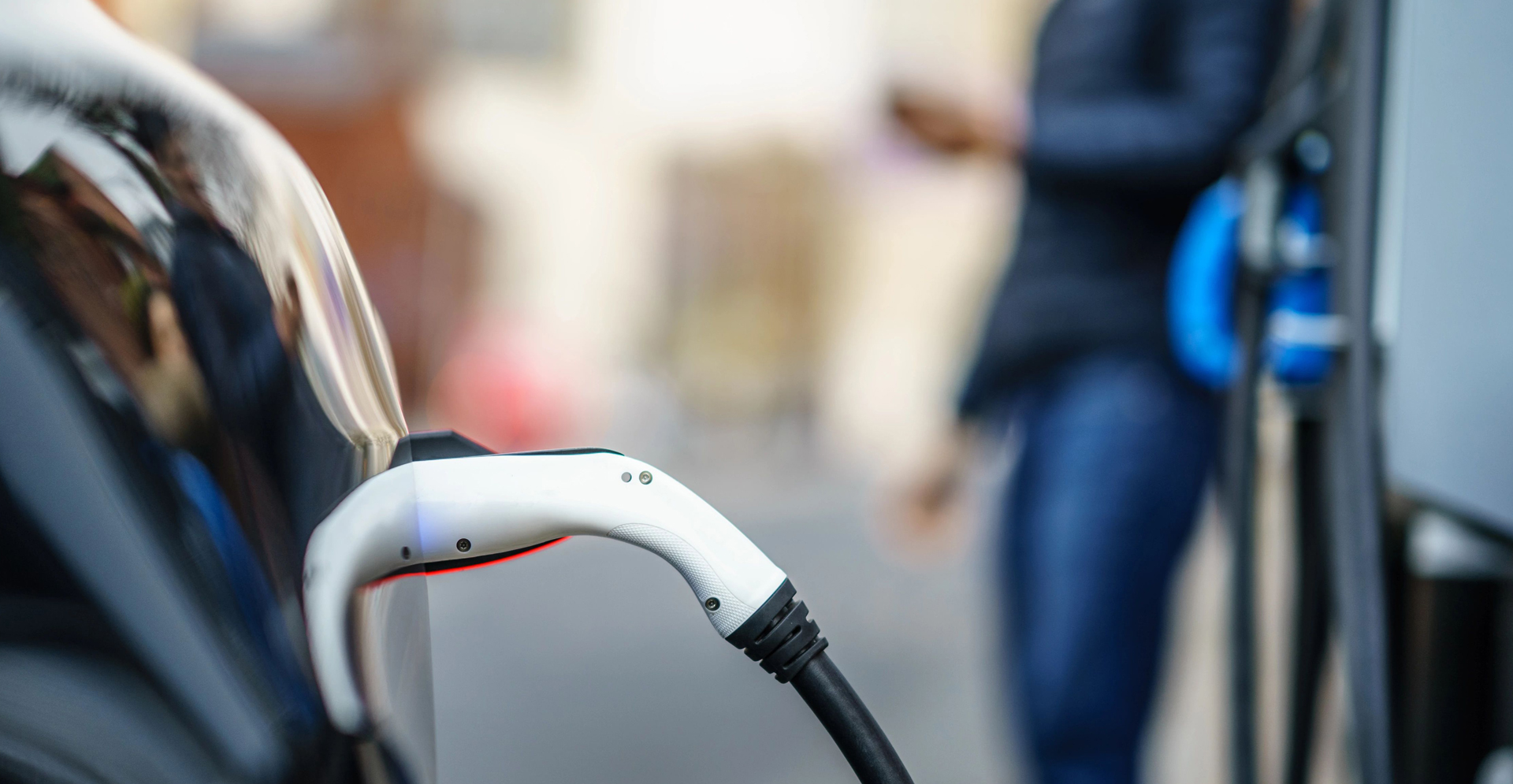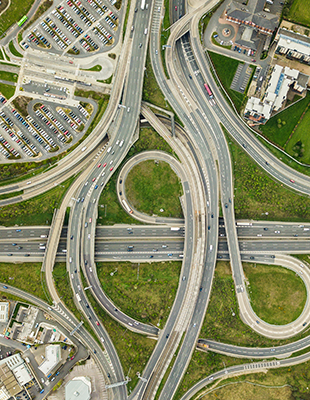Table of Contents
The Challenge
The planning and construction of the Riederwald Tunnel places high and complex demands on foundation needs and groundwater management.
21,500 vehicles
The Challenge
Residents, commuters and business people have been waiting for the gap between the A66 and the A661 in the east of the city to be closed for a long time. Noise and exhaust fumes from through-traffic pollute the urban environment, while daily waiting times in traffic jams waste valuable resources, unnecessary CO2 is emitted and the environment is polluted. With this underground solution linking two major highways, new urban development options are opening up and the living environment is being improved.
The Solution
As geotechnical consultant, Arcadis developed the survey and investigation concept and produced the subgrade and foundation report as well as the groundwater model.
50%
The Solution
With a total length of 1.37 miles, a tunnel length of 0.68 miles, 1.4 million cubic yards of excavated earth and over 390,000 cubic yards of concrete structures, closing the gap in the urban motorway network posed considerable geotechnical challenges.
As a geotechnical consulting service, Arcadis developed the survey and investigation concept and produced the subgrade and foundation report as well as a large-scale groundwater model. In addition to a large number of measurements and analyses at more than 120 measuring points, this included extensive database management, the continuation of a numerical groundwater model and the technical evaluation of the entire groundwater situation.
-
Read more
In addition, Arcadis planned the area of the trough structure between the ramps (the connection to the A661) and the western tunnel entrance — again this was a technically challenging task. For example, feasible solutions had to be found for the existing subgrade and groundwater flow situation. Arcadis worked extensively on both the object planning and the structural design in phases 1-3.

The Result
With the commissioning of the Riederwald Tunnel in Frankfurt, commuters and business people will benefit from a more efficient mobility network.
210.000 m³
The Result
It is expected that the daily traffic volume through Am Erlenbruch road will be reduced by 8,000 cars after the tunnel has been put into operation and by about 13,500 cars on Hanauer Landstrasse road (source). At the same time, significantly less congestion time is expected for commuters and professionals. The result is less noise, less CO2 emissions, more efficient mobility, a higher quality of life for residents and new opportunities for urban development. Road areas can be redesigned and new walking and cycling paths are set to stimulate sustainable mobility. New green spaces provide space for recreation and relaxation for residents and visitors of the city.
Find out more about this project
We hope you enjoyed this story. It would be our pleasure to connect with you and discuss how we can help you improve the quality of life at your business.

Want to read more?
You might also be interested in this
- Related Projects
- Related Insights
- Related Blogs











